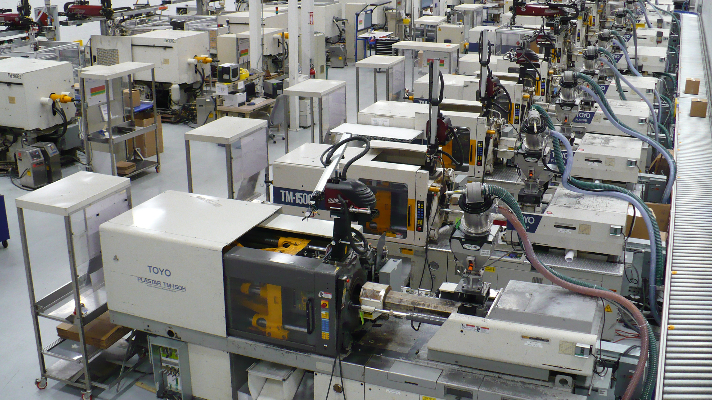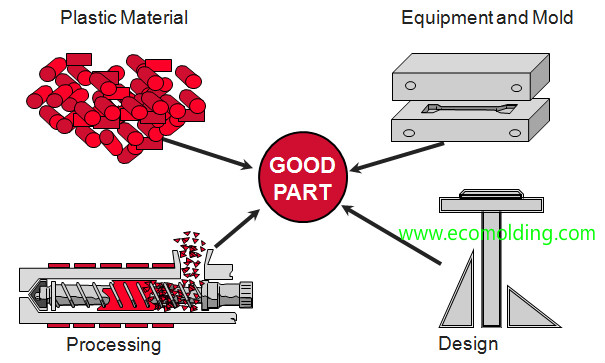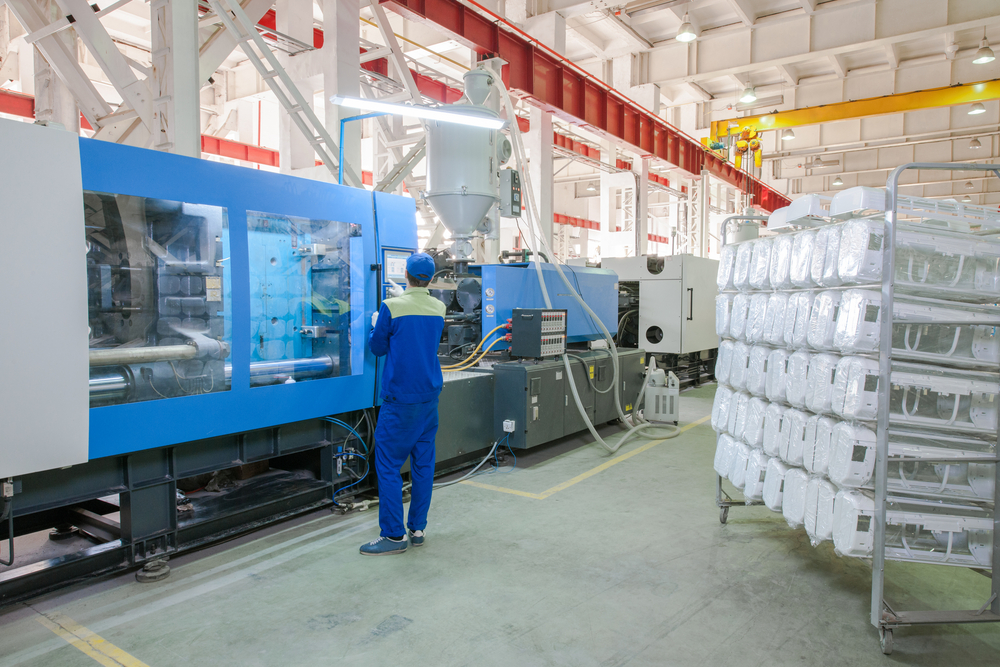Just How Plastic Injection Molding Drives Performance in Automation
Just How Plastic Injection Molding Drives Performance in Automation
Blog Article
Comprehending the Basics of Plastic Shot Molding Processes
Plastic injection molding offers as a cornerstone of modern production, providing a methodical approach to creating complex parts with precision. Checking out these essential elements can reveal how even small adjustments can lead to considerable improvements in manufacturing end results, elevating concerns about the capacity for advancement in this established procedure.
What Is Plastic Shot Molding?
Plastic injection molding is a commonly made use of production process that changes thermosetting and polycarbonate materials into specific and intricate shapes. This method is preferred for its capability to generate high volumes of similar components with outstanding accuracy, making it a vital method in different sectors, including vehicle, durable goods, and clinical tools.
The process entails melting the selected plastic material and injecting it into a mold and mildew under high pressure. The mold, developed to the requirements of the desired component, allows the molten plastic to materialize as it cools down and solidifies. When the product has actually set, the mold and mildew is opened, and the completed element is expelled.
Plastic shot molding uses numerous benefits, consisting of reduced waste, consistency in production, and the ability to integrate detailed layouts that might be testing with various other making approaches. Additionally, it supports a wide series of products, each providing unique properties that can be tailored for specific applications. As industries continue to introduce, plastic shot molding continues to be at the forefront, enabling the growth of innovative items that meet developing customer demands.
The Injection Molding Refine
The injection molding process is an innovative method that includes several essential stages to produce premium plastic elements. At first, plastic pellets are fed into a heated barrel where they are thawed right into a viscous liquid. This molten plastic is after that infused under high pressure into a precision-engineered mold, which forms the product into the desired kind.
When the mold is loaded, the plastic is permitted to solidify and cool down, taking the form of the mold and mildew cavity. Cooling time is crucial, as it impacts the cycle time and the final residential or commercial properties of the molded component. After sufficient air conditioning, the mold opens up, and the completed component is ejected using ejector pins.

Products Made Use Of in Shot Molding
Numerous products can be used in the shot molding process, each offering special residential properties that deal with details applications. One of the most commonly used materials include thermoplastics, thermosetting plastics, and elastomers.

Thermosetting plastics, like epoxy and phenolic resins, go through a chemical adjustment during the treating procedure, leading to an inflexible, stringent structure. These products are optimal for applications calling for high heat resistance and structural stability, often utilized in electric insulators and automobile parts.
Elastomers, including silicone and rubber-based materials, supply flexibility and resilience. Their special properties make them appropriate for applications that require flexibility, such as gaskets and seals.
Additionally, specialty materials like bio-based plastics and composites are acquiring grip for their ecological advantages and boosted efficiency features, widening the range of injection molding applications in numerous markets. Understanding the residential properties of these products is critical for selecting the suitable kind for particular projects.
Advantages of Injection Molding
Injection molding attracts attention as a highly reliable manufacturing process that offers various more benefits for generating complicated get rid of precision. Among one of the most considerable benefits is the ability to create elaborate layouts that would certainly be impossible or tough to accomplish with various other approaches (Plastic Injection Molding). The procedure permits limited resistances and in-depth features, guaranteeing premium components
Furthermore, injection molding is recognized for its fast production abilities, making it an optimal option for high-volume manufacturing. When the mold is produced, components can be created swiftly, reducing preparations and increasing total performance. This efficiency not only lowers manufacturing expenses however additionally supplies an one-upmanship out there.
The convenience of materials utilized in injection molding further boosts its charm. A variety of thermoplastics and thermosetting polymers can be employed, enabling suppliers to choose products that best meet their specific demands, consisting of warmth, strength, and adaptability resistance.
In addition, the procedure decreases waste, as excess product can typically be reused and recycled. This sustainability facet adds to a decreased ecological impact, making shot molding an accountable manufacturing choice. Generally, the advantages of injection molding make it a preferred method for numerous markets.
Elements Influencing Item Quality
While numerous elements can influence product quality in injection molding, comprehending these elements is essential for accomplishing optimal outcomes. Secret aspects consist of material selection, refining parameters, and mold and mildew style.
Product choice plays a vital function, as different polymers show distinct properties that impact flowability, stamina, and thermal stability. Inadequate product choice can result in problems such as warping or wikipedia reference insufficient dental filling.
Processing specifications, including pressure, temperature level, and cycle time, must be diligently controlled. Variations in these settings can lead to variances partially measurements and surface area coating. For example, excessively high temperatures may cause degradation of the polymer, while poor stress can lead to short shots.
Mold and mildew design is similarly vital, as it identifies the circulation of the molten plastic and the cooling process. Badly made molds might result in unequal cooling prices, leading to recurring tensions and dimensional inaccuracies.

Verdict
To conclude, plastic injection molding functions as a vital production procedure that makes it possible for the reliable manufacturing of high-grade parts. Proficiency of the shot molding process, including the understanding of materials and the impact of numerous aspects on product quality, is important for achieving optimal outcomes. The benefits of this technique, such as cost-effectiveness and style versatility, further underscore its value throughout several industries, strengthening its condition as a recommended option for high-volume production.
Plastic injection molding offers as a cornerstone of modern production, supplying a methodical technique to producing intricate components with precision.Plastic shot molding uses several benefits, including reduced waste, uniformity in production, and the capacity to integrate intricate layouts that may be testing with other making techniques (Plastic Injection Molding). As industries proceed to innovate, plastic shot molding continues to be at the forefront, enabling the growth of advanced items that meet advancing consumer needs
The injection molding procedure is a sophisticated method that involves a number of vital stages to generate premium plastic components.In final thought, plastic shot molding serves as an important manufacturing procedure that makes it possible for the effective manufacturing of high-quality elements.
Report this page